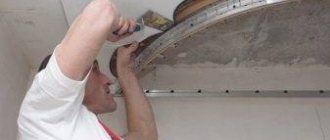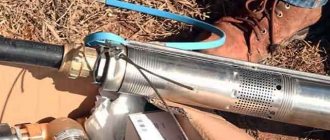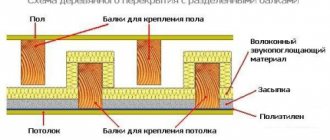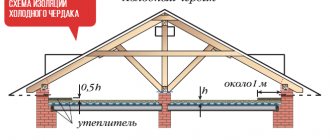Stretch ceilings are one of the most common types of ceiling finishing. A variety of designs, textures, and color shades are the main advantages of this type of coating. They have another remarkable property - moisture resistance and the ability of PVC film ceilings to hold large volumes of water if something bad happened and the neighbors above forgot to turn off the tap.
All that remains is to organize the drainage of water from the stretch ceiling and dry the canvas thoroughly. However, you need to know how to properly eliminate the consequences of a possible “flooding”.
How can water end up on the ceiling?
In addition to sloppy neighbors, there may be several reasons for this phenomenon:
- Penetration of cold water due to a break in the main pipeline.
- Hot water from water supply and heating systems.
- Liquids from the sewer.
- Rain flows entering the room from storm drains or through the attic.
Also, moisture without objective reasons can appear as a result of “dry” leaks in hot weather, when condensation accumulates under the coating.
Important! If cold water gets on the ceiling, it will cause minimal damage to the coating. If hot liquid accumulates, you will most likely have to completely replace the blade. The same applies to sewage drains. In this case, the suspended ceiling will not only be significantly deformed, but will also lose its aesthetic qualities.
Where can water appear in a suspended ceiling: what to do in case of a flood
There can be water in a suspended ceiling for various reasons. The consequences of its impact, as well as ways to eliminate them, depend on the finishing material, volumes of liquid, duration of its stay and many other factors. First of all, you need to establish the cause of the flood and determine what type of liquid is entering the apartment.
As a result of a leak, the following liquid may enter the suspended ceiling:
- Cold water - when the main pipeline ruptures.
- Hot water - if there is a breakdown of the centralized water supply or heating system.
- Drains – if there is a leak in the sewer.
- Rain water - if storm drains are broken or the roof of the building is damaged (relevant for upper floors).
- Soapy water - can come from neighbors whose washing machine or dishwasher is broken.
- Technical fluid, antifreeze - in case of breakdown of an autonomous type heating system.
The type of liquid that can get under the ceiling depends on the location of communications in the house
In rare cases, “dry” leaks occur. In hot weather, condensation forms under the coating, which can accumulate on the inner surface of the tension fabric.
What to do if the suspended ceiling in the apartment is flooded
A well-installed coating will be able to retain liquid for some time, so do not panic if a leak occurs. In such a situation, you need to strictly follow certain rules.
What to do if the upstairs neighbors drown? In this case it is necessary:
- Disconnect the apartment.
- Identify and eliminate the source of the leak.
- Remove valuables from the room or cover them with foil.
- Call specialists.
- Contact the company that installed the structure, or, having carefully prepared, drain the water from the stretch ceiling yourself.
When flooding a stretch ceiling, it is necessary to turn off the power to the apartment to prevent a short circuit
Typically, communications (lighting fixtures, electrical wiring) are hidden between the ceiling slab and the stretched canvas. These components must never be flooded, otherwise a short circuit and fire may occur. To prevent this, at the first sign of a leak, you must immediately turn off the power to the apartment. Conventional switchboards have a switch that needs to be turned. More modern options are controlled automatically; it should be turned off.
Then you need to identify the source of the leak and block the flow of liquid into the room
It is very important to stop the water as quickly as possible to prevent the fabric from breaking. If the liquid comes from the upper apartment, you need to immediately inform the neighbors
They will turn off the water. If neighbors are not at home, the supply is shut off throughout the entire riser using a common valve. Usually it is located in the basement of the house, so it is advisable to find out in advance who has the keys to this room. Most often this is the concierge, the person in charge of the house or entrance.
The riser is also closed in cases where there is a break in the pipes of the sewer or heating systems, and then the emergency service is called. If you need to urgently turn off the water, you can contact the police. It is prohibited to try to open your neighbors' apartment on your own. This will be regarded as illegal entry into private territory.
Before removing water from a suspended ceiling, you need to remove electrical appliances from the room and, if possible, remove all valuables. The rest can be covered with plastic wrap. This applies to upholstered furniture and expensive flooring.
It is necessary to drain the water accumulated under the ceiling after completing all the preparatory steps
How stretch ceilings behave during flooding
Only ceilings made of PVC film can save a room from a huge flood. They stretch almost twice, due to the density of the material, and form a kind of “bubble” that reliably holds water.
Penetrating through the ceiling beams, water begins to flow down the walls and goes inside the ceiling covering. With reliable and high-quality fastening of the stretch ceiling, liquid will collect on the surface of the canvas, pulling it out. At the same time, 1 sq. m. PVC film can hold 100-120 liters.
Fabric stretch ceilings have a porous structure. When moisture gets on them, it quickly seeps through micropores and floods the room. In addition, under the weight of water, the coating may not withstand it, and the canvas will turn out of the baguettes.
Despite the fact that fabric ceilings are seamless, they are able to retain moisture for a very short time and in small volumes.
Therefore, experts recommend not using fabric textures in rooms with high humidity or in rooms where there is a risk of flooding (kitchen, bathroom).
How much water can a suspended ceiling withstand?
Manufacturers claim: suspended ceilings are a barrier to water and guaranteed protection of the apartment’s interior from flooding, provided that the volume of water per square meter of coverage does not exceed 100 liters. A number of factors must be taken into account:
- the larger the area of the stretch ceiling, the less the permissible load on the canvas;
- the higher the degree of tension of the material, the lower its density and strength;
- The properties of the material from which the suspended ceiling is made are of great importance.
The actual amount of water that a suspended ceiling can withstand per square meter ranges from 70 to 120 liters.
The material from which suspended ceilings are made comes in two types: fabric or polyvinyl chloride film.
Properties of stretch ceiling made of polyvinyl chloride film
Polyvinyl chloride film, or PVC film for short, has high elasticity and strength. When in contact with water, it does not change color, does not absorb or allow moisture to pass through. When flooded, water does not spread over the surface of the ceiling. The film coating stretches and sags in the place where the water initially entered, forming a so-called bubble.
The ceiling made of PVC film stretches and sags in the place where the water initially entered
Do not pierce the bubble to drain the water. A small hole under the weight of water will very quickly turn into a large tear in the film. It will no longer be possible to restore the coating.
Video: what happens to a polyvinyl chloride stretch ceiling during a flood
Properties of fabric stretch ceilings
Fabric stretch ceilings do not tolerate interaction with water. Waterproof qualities are ensured by a special varnish coating. But if the varnish is of poor quality, the suspended ceiling allows water to pass through in places. The fabric base of the ceiling has low elasticity; when flooded with water, it stretches slightly and practically does not sag. If there is a large amount of water, it breaks out of the fastenings and cannot be restored.
If there is a large amount of water, the fabric sheet breaks out of the fastenings and cannot be restored
Video: what happens to a fabric suspended ceiling when flooded with water
How many days will a stretch ceiling flooded with water last?
If the amount of water on the ceiling does not increase, then the stretch ceiling can hold it indefinitely. Do not delay solving the problem for a long time. High humidity in an enclosed ceiling space promotes the formation of mold. In addition, the film, which is strongly stretched under the weight of water, can burst when it comes into contact with the edges of the lamp, corners of furniture or any sharp object. There is a risk of rupture if water accumulates at the junction of the stretch ceiling coverings. It is advisable to drain within 2-3 days, following the rule: the sooner you start solving the problem, the sooner it will disappear.
A film that is strongly stretched under the weight of water may burst upon contact with sharp edges of surrounding objects.
What to do if the ceiling is flooded with water
At the first sign of water accumulation on the ceiling, you need to take action immediately.
First of all:
- Turn off the power supply at the panel. Before you drain the water from the suspended ceiling, it is better not to use electricity.
- Find the true cause of the appearance of liquid on the coating.
- Try to stop new volumes of water from reaching the ceiling as quickly as possible.
- If your neighbors are the culprits of the flood, immediately notify them so that they turn off their water.
- If the cause of the flood is a break in the sewer system or heating pipes, it is necessary to turn off the water in the basement and call emergency services.
Pumping water from a suspended ceiling yourself
Preparation
In case of unexpected flooding, you can call a special company that provides services for eliminating such disasters. If this is not possible, you will have to act independently.
Before draining water from suspended ceilings, you need to prepare:
- Remove all household appliances, furniture and other valuables from the premises.
- Cover the remaining interior items with thick film.
- Prepare basins, buckets and other containers for draining water.
- Find the drain location. This could be a hole located where the lamp is mounted or a corner as close as possible to the largest accumulation of water.
Stretch ceilings draining water, possible errors
The situation is not so critical if the ceiling is flooded in the bathroom or kitchen. In this case, it is enough to stretch the hose and pump the water into the sink. The situation is different with the coating in the rooms.
When a leak occurs, the ceiling sags, making it almost impossible to determine the amount of liquid accumulated there. The denser the material, the larger volumes of water it can hold. In any case, there will be a lot of it. Therefore, it is impossible to do without the help of strangers.
The most common mistake when draining yourself is incorrectly determining the amount of water. Other errors include:
- Puncture the material to drain water.
Important! It is forbidden to pierce the fabric. Even a small hole will increase in diameter under the weight of water and you will have to say goodbye to the suspended ceiling.
- Passing liquid through the canvas to the hole for the lighting fixture.
- Attempts to smooth the canvas using improvised objects.
- Drying the ceiling with a household hairdryer in order to restore its original structure. This can only be done with a gun for installing suspended ceilings or with a construction hairdryer.
How to dry a suspended ceiling after flooding
When you have successfully drained the water, the question will arise of how to dry the suspended ceiling after flooding. Of course, it is advisable to immediately call a specialist who will assess the degree of damage to the material and offer options for restoring the coating. If he can come soon, there shouldn't be any problems. In the event that an accident occurs, for example, over the weekend, the owners will have to prepare for drying themselves.
Until a specialist arrives, leave the holes used for draining open - do not replace the lamp in its place and do not tuck the edge of the covering back. Complete drying is achieved using a hair dryer. Or a similar household appliance with high power, if you still decide to act on your own.
Options for draining water from a stretch ceiling
As mentioned above, you can drain the water in one of two ways.
Through the hole located at the installation site of the lighting fixture
You must proceed as follows:
- Find the lamp located closest to the maximum accumulation of water on the canvas and dismantle it, first turning off the electricity.
- Pull the canvas down by the “hole” from the chandelier until water begins to flow out of it into the placed bucket.
Important! A reinforcing ring is placed over the hole for the lighting fixture to prevent the fabric from spreading. When draining the water and stretching the film, you need to stick your fingers inside the ring and wrap your hands around it in several places.
- Stretch the canvas until the water is completely pumped out of it. If the volume of liquid is too large, the help of a second person is needed to lift the bubble from the middle.
You can use a hose by inserting it into the hole if there is a lot of water collected on the ceiling. This will make it easier to avoid overfilling the bucket with water. It is enough to pinch the outlet end of the hose with your fingers at the moment when another person takes containers of water out of the room.
When the water stops flowing into the bucket, the job is finished. However, there is no need to rush to reinstall the lighting element and turn on the power supply switches. This can only be done after the panel and the entire ceiling surface have completely dried. Typically the waiting period ranges from 2 days to a week.
Through dismantling the baseboard indoors
This method will help if the lighting fixtures are located far from the place of greatest accumulation of water. Necessary:
- Determine the wall section of the structure closest to the maximum sagging of the canvas.
- Remove the required part of the ceiling plinth.
- Carefully remove a small part of the film. The canvas should be held as tightly as possible.
To dismantle the canvas from the fastening, you need to equip yourself with a tool like a screwdriver, the edges of which should be wrapped with soft cloth so as not to pierce the material. Having inserted the tool into the profile groove, you need to bend the bar until the fastening becomes noticeable. Then use pliers to pick up the harpoon and remove it from the profile. For such an “operation” it is enough to dismantle 20 cm of the coating. Now you can start pumping out the water.
- If the volume of water is not too large, it can be poured into a substitute bucket by slowly lowering the edge of the film. For a large amount of liquid, use a hose, as in the first method.
You must act very carefully if the ceiling is flooded with boiling water. Hands must be protected with thermal gloves. And it is better if such work is performed by specialists. You should also turn to them for help when the bubble hangs over the sharp edge of a table or other furniture, threatening to burst at any moment.
Drying the ceiling after draining the water
After the water has been completely drained from the ceiling, it must be thoroughly dried. Otherwise, the appearance and development of mold spores cannot be avoided. It is better if the drying of the cloth is carried out by a specialist using equipment designed for this purpose. Usually the canvas is heated with a heat gun or a hair dryer.
Most often, companies that install stretch ceilings provide a guarantee on the coating. Therefore, you can contact them. They will not only eliminate the consequences of the flood, but will also make a discount on repair work, returning the canvas to its previous appearance.
On a note! Only fabric coverings can restore their original shape and smooth out themselves. If a ceiling made of PVC film is flooded, after completing the rescue work and re-installation, the canvas will remain wrinkled; only a specialist will return the ceiling to its original appearance using a heat gun.
If the flooding was severe, it is necessary to dry the base ceiling, treat it with antiseptic solutions and remove cracked plaster.
In conclusion, it can be noted that flooding of suspended ceilings is not such a terrible disaster. By following certain rules and technologies, it will be possible to eliminate all the consequences of the flood.











